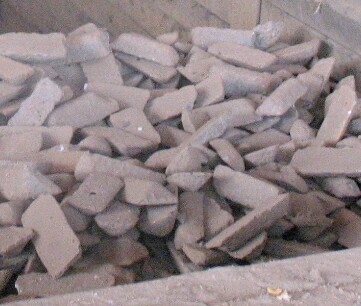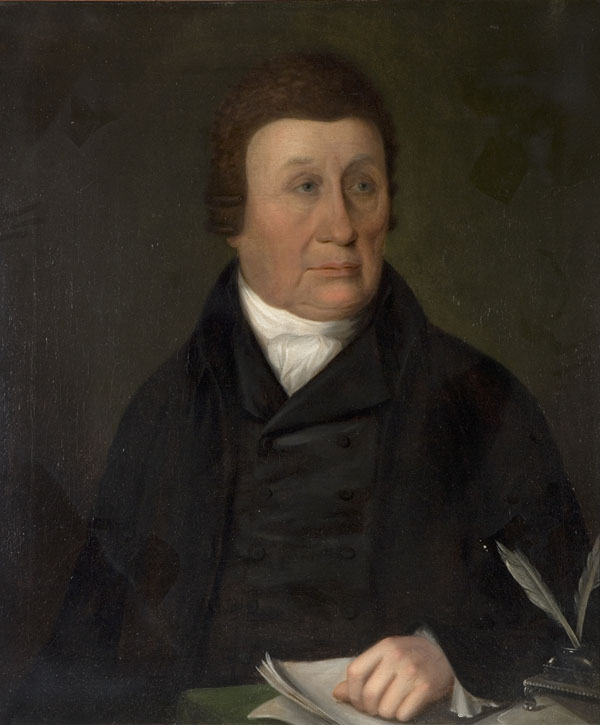|
Aston Botterell
Aston Botterell is a village and small Civil parishes in England, civil parish in the English Counties, county of Shropshire, West Midlands (region), West Midlands, England. The village lies south-west of the market town of Bridgnorth and north-east of the town of Ludlow. The nearest main roads are the B4364 and the A4117. According to the 2001 UK census, 2001 census, the civil parish had a population of 74. The area's economy is still largely based on agriculture, though many residents travel up to to work in other sectors such as the service and manufacturing industries. History The name of Aston Botterell is derived from the Old English for "eastern settlement (''tun'')", with 'Botterell' being the name of a former local landowning family: William Botterell is recorded as holding the manor in 1203. His family came over with William I of England, William of Normandy in 1066. Before Anglo-Saxon England, Saxon times, the only evidence for human activity in the area comes fro ... [...More Info...] [...Related Items...] OR: [Wikipedia] [Google] [Baidu] |
Shropshire
Shropshire (; abbreviated SalopAlso used officially as the name of the county from 1974–1980. The demonym for inhabitants of the county "Salopian" derives from this name.) is a Ceremonial counties of England, ceremonial county in the West Midlands (region), West Midlands of England, on the England–Wales border, border with Wales. It is bordered by Cheshire to the north-east, Staffordshire to the east, Worcestershire to the south-east, Herefordshire to the south, and the Welsh principal areas of Powys and Wrexham County Borough, Wrexham to the west and north-west respectively. The largest settlement is Telford, while Shrewsbury is the county town. The county has an area of and a population of 498,073. Telford in the east and Shrewsbury in the centre are the largest towns. Shropshire is otherwise rural, and contains market towns such as Oswestry in the north-west, Market Drayton in the north-east, Bridgnorth in the south-east, and Ludlow in the south. For Local government i ... [...More Info...] [...Related Items...] OR: [Wikipedia] [Google] [Baidu] |
Norton, Dudley
Norton is a suburb and council ward in the town of Stourbridge, West Midlands. It has a population of 11,943 in an area of 569 hectares. The population is largely White British and self-identifies as predominantly Christian. History The area now known as Norton originally fell within the parish of Oldswinford before becoming part of the Municipal Borough of Stourbridge. This was then subsumed into Dudley Metropolitan Borough in 1974. It now borders Stourbridge Town, Wollaston, Iverley, South Staffordshire and Oldswinford. Governance Norton ward extends from Love Lane (only the parks side of Love Lane is in Norton; the opposite side is Oldswinford) in Oldswinford along Heath Road and South Road, then left across Roman Road all the way to Norton Road. The boundary follows the built-up area around Racecourse Farm (Racecourse Farm is in Pedmore and in the parish of St Peters along with Racecourse Lane and Fairways Avenue). The golf course is built on Pedmore Common, not Nort ... [...More Info...] [...Related Items...] OR: [Wikipedia] [Google] [Baidu] |
Pig Iron
Pig iron, also known as crude iron, is an intermediate good used by the iron industry in the production of steel. It is developed by smelting iron ore in a blast furnace. Pig iron has a high carbon content, typically 3.8–4.7%, along with silica and other dross, which makes it brittle and not useful directly as a material except for limited applications. Etymology The traditional shape of the molds used for pig iron ingots is a branching structure formed in sand, with many individual ingots at right angles to a central channel or "runner", resembling a litter of piglets being nursed by a sow. When the metal had cooled and hardened, the smaller ingots (the "pigs") were simply broken from the runner (the "sow"), hence the name "pig iron". As pig iron is intended for remelting, the uneven size of the ingots and the inclusion of small amounts of sand are insignificant issues when compared to the ease of casting and handling. History The Chinese were already making pig ir ... [...More Info...] [...Related Items...] OR: [Wikipedia] [Google] [Baidu] |
Ironmaster
An ironmaster is the manager, and usually owner, of a forge or blast furnace for the processing of iron. It is a term mainly associated with the period of the Industrial Revolution, especially in Great Britain. The ironmaster was usually a large-scale entrepreneur and thus an important member of a community. He would have a large country house or mansion as his residence. The organization of operations surrounding the smelting, refining, and casting of iron was labour-intensive, and so there would be numerous workers reliant on the furnace works. There were ironmasters (possibly not called such) from the 17th century onward, but they became more prominent with the great expansion in the British iron industry during the Industrial Revolution. 17th-century ironmasters (examples) An early ironmaster was John Winter (Royalist), John Winter (about 1600–1676) who owned substantial holdings in the Forest of Dean. During the English Civil War he cast cannons for Charles I of England, ... [...More Info...] [...Related Items...] OR: [Wikipedia] [Google] [Baidu] |
Shropshire County Council
Shropshire Council, known between 1980 and 2009 as Shropshire County Council and prior to 1980 as Salop County Council, is the local authority for the non-metropolitan county of Shropshire in the West Midlands region of England. Since 2009 it has been a unitary authority, being a county council which also performs the functions of a district council. The non-metropolitan county is smaller than the ceremonial county of Shropshire, which additionally includes Telford and Wrekin. In 2025, the Liberal Democrats took control of the council. History Elected county councils were established in 1889 under the Local Government Act 1888, taking over administrative functions that had previously been performed by unelected magistrates at the quarter sessions. The first elections were held in January 1889 and the county council formally came into being on 1 April 1889. On that day it held its first official meeting at the Shirehall in Shrewsbury, the courthouse (built 1837) which had ser ... [...More Info...] [...Related Items...] OR: [Wikipedia] [Google] [Baidu] |
Old Red Sandstone
Old Red Sandstone, abbreviated ORS, is an assemblage of rocks in the North Atlantic region largely of Devonian age. It extends in the east across Great Britain, Ireland and Norway, and in the west along the eastern seaboard of North America. It also extends northwards into Greenland and Svalbard. These areas were a part of the paleocontinent of Euramerica (Laurussia). In Britain it is a lithostratigraphic unit (a sequence of rock strata) to which stratigraphers accord supergroup status and which is of considerable importance to early paleontology. The presence of ''Old'' in the name is to distinguish the sequence from the younger New Red Sandstone which also occurs widely throughout Britain. Sedimentology The Old Red Sandstone describes a group of sedimentary rocks deposited in a variety of environments in the late Silurian, through the Devonian and into the earliest part of the Carboniferous. The body of rock, or facies, is dominated by terrigenous deposits and co ... [...More Info...] [...Related Items...] OR: [Wikipedia] [Google] [Baidu] |
Neenton
Neenton is a civil parish and small village in south east Shropshire, England, which is situated on the B4364 southwest of the market town of Bridgnorth. The Rea Brook/River Rea, which was historically known as the River Neen, flows by the village. There is a church on the corner of the B4364 passing through Neenton called the All Saints Church, also there is a public house open, called the ''Pheasant Inn'' (previously "The New Inn"). History Data from the 1801 Census shows that Neenton's population was very small with 120 persons, this population fluctuated insignificantly for the next 100 years, with its highest being 144. Data from the 1831 census shows that the main sector of employment for males aged over 20 was agricultural labourers, followed by farmers who employed the labourers. As the population was very small agricultural labourers made up roughly a fifth of the population. Due to the main employment sector being agricultural the predominant social class of the males i ... [...More Info...] [...Related Items...] OR: [Wikipedia] [Google] [Baidu] |
Population Graph Of Aston Botterell
Population is a set of humans or other organisms in a given region or area. Governments conduct a census to quantify the resident population size within a given jurisdiction. The term is also applied to non-human animals, microorganisms, and plants, and has specific uses within such fields as ecology and genetics. Etymology The word ''population'' is derived from the Late Latin ''populatio'' (a people, a multitude), which itself is derived from the Latin word ''populus'' (a people). Use of the term Social sciences In sociology and population geography, population refers to a group of human beings with some predefined feature in common, such as location, race, ethnicity, nationality, or religion. Ecology In ecology, a population is a group of organisms of the same species which inhabit the same geographical area and are capable of interbreeding. The area of a sexual population is the area where interbreeding is possible between any opposite-sex pair within the area ... [...More Info...] [...Related Items...] OR: [Wikipedia] [Google] [Baidu] |
Cleobury Mortimer And Ditton Priors Light Railway
The Cleobury Mortimer and Ditton Priors Light Railway was a pre-grouping railway company that served part of south Shropshire. Everard Calthrop was appointed Consulting Engineer in 1900, responsible for surveying the route and preparing the construction plans. Construction was authorised by the Cleobury Mortimer and Ditton Priors Light Railway Order 1901 under the Light Railways Act 1896 granted on 23 March 1901, and the line opened for passenger traffic on 21 November 1908. The line had a junction with the Wyre Forest line of the Great Western Railway (GWR) at Cleobury Mortimer and was absorbed into the GWR in 1922. The line closed for passenger services on 26 September 1938. The line was then used by the Royal Navy which had a Royal Naval Armaments Depot (RNAD) at the end of line at RNAD Ditton Priors until the railway finally closed in 1960. Route Cleobury Mortimer - Cleobury Town - Stottesdon - Burwarton - Ditton Priors. The Board of Trade report at opening gave the total ... [...More Info...] [...Related Items...] OR: [Wikipedia] [Google] [Baidu] |
Blast Furnace
A blast furnace is a type of metallurgical furnace used for smelting to produce industrial metals, generally pig iron, but also others such as lead or copper. ''Blast'' refers to the combustion air being supplied above atmospheric pressure. In a blast furnace, fuel ( coke), ores, and flux (limestone) are continuously supplied through the top of the furnace, while a hot blast of (sometimes oxygen enriched) air is blown into the lower section of the furnace through a series of pipes called tuyeres, so that the chemical reactions take place throughout the furnace as the material falls downward. The end products are usually molten metal and slag phases tapped from the bottom, and flue gases exiting from the top. The downward flow of the ore along with the flux in contact with an upflow of hot, carbon monoxide-rich combustion gases is a countercurrent exchange and chemical reaction process. In contrast, air furnaces (such as reverberatory furnaces) are naturally aspirated, usu ... [...More Info...] [...Related Items...] OR: [Wikipedia] [Google] [Baidu] |
Bringewood Ironworks
Bringewood Ironworks was a charcoal ironworks in north Herefordshire. It was powered by the river Teme, with a blast furnace, a finery forge and latterly a rolling mill for blackplate (to be tinned into tinplate). It was probably built for Robert Dudley, 1st Earl of Leicester in the 1590s, but reverted to the Crown on his attainder, and was then let to Sir Henry Wallop. However, he evidently sublet it to working ironmasters. By 1623, it was run by Francis Walker, and continued to be operated by his descendants until the bankruptcy of Job Walker in 1695. They were also concerned in a number of other ironworks in southern and central Shropshire. About 1695, the ironworks, consisting of a blast furnace and a forge, was acquired by Richard Knight (1659–1745). He and then his sons gradually expanded their activities, acquiring ironworks in the valley of the River Stour. Richard Knight retired in about 1733, after which the works were managed by his son Ralph Knight for a famil ... [...More Info...] [...Related Items...] OR: [Wikipedia] [Google] [Baidu] |
Richard Knight (1659-1745)
Richard Knight may refer to: * Richard Knight (MP) (by 1518–1555 or later), English MP for Chichester *Sir Richard Knight (1639–1679), English MP for Lymington * Richard Knight (footballer) (born 1979), English footballer * Richard Knight (1659–1745), of Downton, Herefordshire, ironmaster *Richard Payne Knight (1750–1824), MP, classical scholar, connoisseur, archaeologist and numismatist *Richard of the Knight Brothers The Knight Brothers (also billed as The Knight Bros.) were a soul music duo, comprising Richard Dunbar (b. 31 May 1939) and Jimmy Diggs (b. James Leon Diggs, 11 October 1938)(d. February 28, 2023). Both had been singing in local church choirs ..., a soul music duo * Richard Knight (cricketer) (1892–1960), English cricketer * Richard Knight (rower) (born 1928), British Olympic rower * Richard Knight (speedway rider) (born 1959), former motorcycle speedway rider See also * Dick Knight (other) {{Human name disambiguation, Knight, Richard ... [...More Info...] [...Related Items...] OR: [Wikipedia] [Google] [Baidu] |







